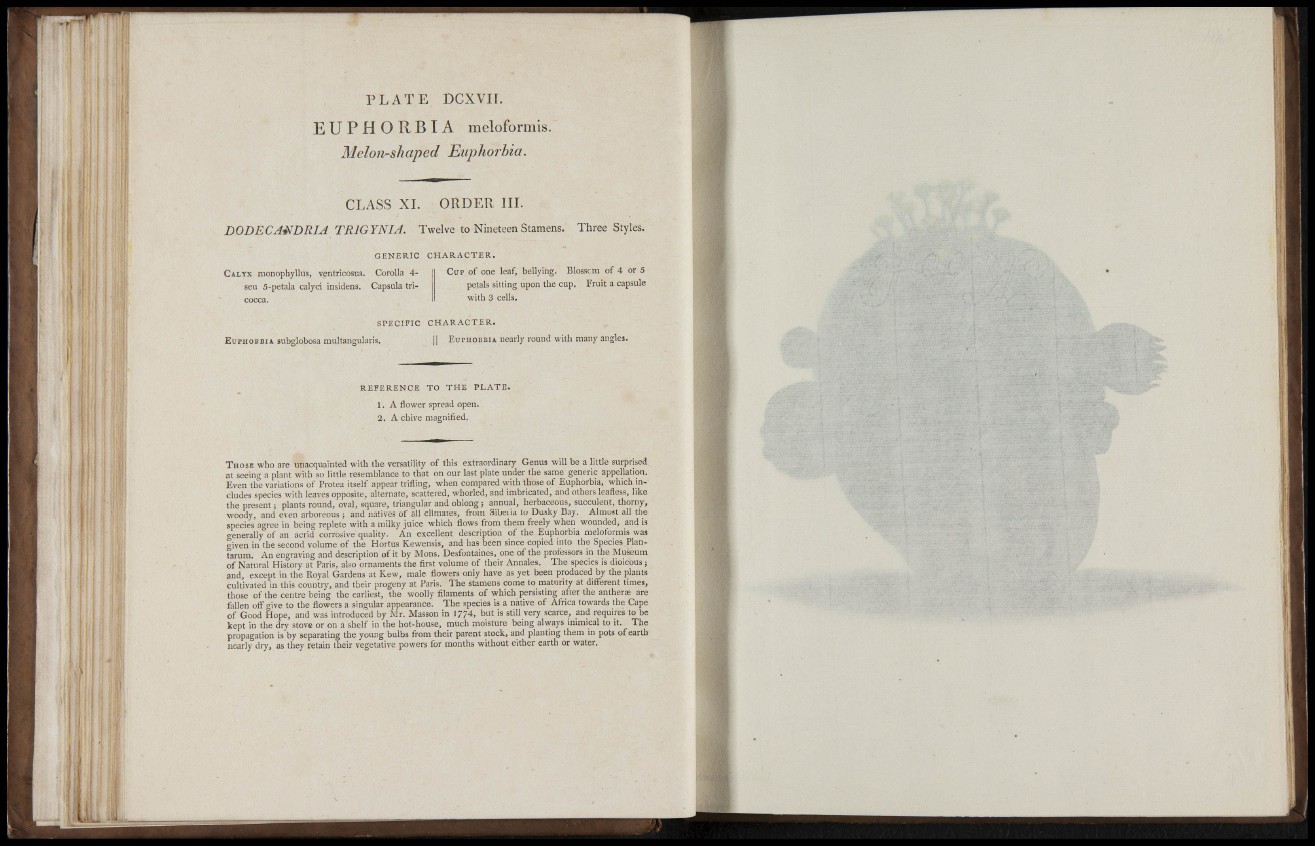
T
i
t
• -I
' J! ::
! »
P L A T E DCXVir.
E U P H O R B I A meloformis.
Melon-shaped Euphorbia.
CLASS XL ORDER IIL
DODECA^^DRIA TRIGYNIA. Twelve to Nineteen Stamens. Three Styles.
CALYX monophyllus, ventricosus. Corolla 4-
seu 5-petala calyd insidens. Capsula tricocca.
GENERIC CHARACTER.
CUP of one leaf, bellying. Blosscm of 4 or 5
petals sitting upon the cup. Fruit a capsule
with 3 cells.
STECIFIC CHARACTER.
EUPHORBIA subirlobosa multangularis. EUTHOKEIA nearly round with many angles.
REFERENCE TO THE PLATE.
1. A flower spread open.
2. A chive magnified.
THOSE who are unacquainted with the versatility of this extraordinary Genus will be a little surprised
at seeing a plant with so little resemblance to that on our last plate under the same generic appellation.
Even the variations of Protea itself appear trifling, when compared with those of Euphorbia, which includes
species with leaves opposite, alternate, scattered, whorled, and imbricated, and others leafless, like
the present; plants round, oval, square, triangular and oblong; annual, herbaceous, succulent, thorny,
woody, and even arboreous ; and natives of all climates, from Siberia to Dusky Bay. Almost all the
species agree in being replete with a milky juice which flows from them freely when wounded, and is
generally of an acrid corrosive quality. An excellent description of the Euphorbia meloformis was
given in the second volume of the Hortus Kewensis, and has been since copied into the Species Plantarum.
An engraving and description of it by Möns. Desfontaines, one of the professors in the Museum
of Natural History at Paris, also ornaments the first volume of their Annales. The species is dioicous;
and, except in the Royal Gardens at Kew, male flowers only have as yet been produced by the plants
cultivated in this country, and their progeny at Paris. The stamens come to maturity at diflirent times,
those of the centre being the earliest, the woolly filaments of which persisting after the antherae are
fallen off give to the flowers a singular appearance. The species is a native of Africa towards the Cape
of Good Hope, and was introduced by Mr. Masson in 1774, but is still very scarce, and requires to be
kept in the dry stove or on a shelf in the hot-house, much moisture being always mimical to it. The
propagation is by separating the young bulbs from their parent stock, and planting them in pots of earth
nearly dry, as they retain their vegetative powers for months without either earth or water.
I r j
i-:
J ' l